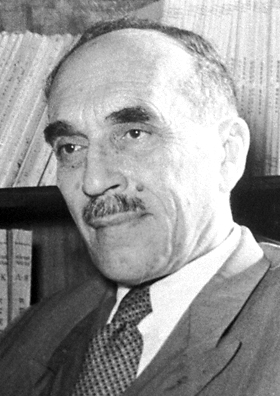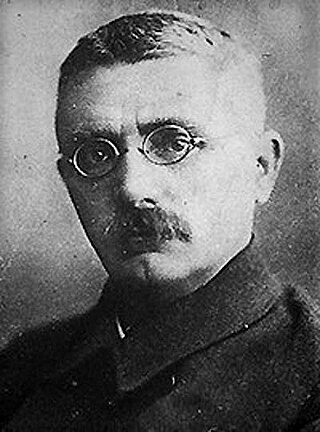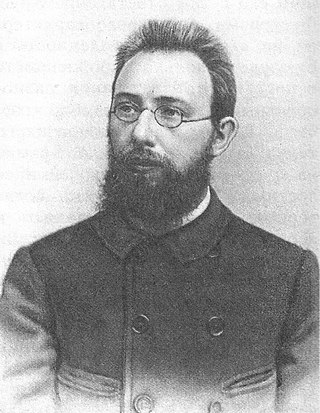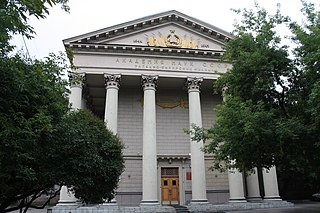Related Research Articles

Tomsk is a city and the administrative center of Tomsk Oblast in Russia, located on the Tom River. Population: 556,478 (2021 Census); 524,669 (2010 Russian census); 487,838 (2002 Census); 501,963 (1989 Soviet census).

Vitaly Lazarevich Ginzburg, ForMemRS was a Russian physicist who was honored with the Nobel Prize in Physics in 2003, together with Alexei Abrikosov and Anthony Leggett for their "pioneering contributions to the theory of superconductors and superfluids."

The Russian Academy of Sciences consists of the national academy of Russia; a network of scientific research institutes from across the Russian Federation; and additional scientific and social units such as libraries, publishing units, and hospitals.

Prof Sergei Lvovich Sobolev, FRSE was a Soviet mathematician working in mathematical analysis and partial differential equations.

Nikolay Nikolayevich Semyonov , sometimes Semenov, Semionov or Semenoff was a Soviet physicist and chemist. Semyonov was awarded the 1956 Nobel Prize in Chemistry for his work on the mechanism of chemical transformation.

The Bauman Moscow State Technical University, sometimes colloquially referred as the Bauman School or Baumanka (Бауманка), is a public technical university (polytechnic) located in Moscow, Russia. Bauman University offers B.S., M.S & PhD degrees in various engineering fields and applied sciences. In 2023, US News & World Report ranked it #1,758 in the world.

Ivan Nikitich Smirnov was a Russian Bolshevik revolutionary, Soviet politician and Communist Party functionary. A prominent member of the Left Opposition, he led a secret Trotskyist opposition group in the Soviet Union during the Stalin period. He was arrested in 1933 and shot during the Great Purge.
Dmitri Dmitrievich Ivanenko was a Soviet theoretical physicist of Ukrainian origin who made great contributions to the physical science of the twentieth century, especially to nuclear physics, field theory, and gravitation theory. He worked in the Poltava Gravimetric Observatory of the Institute of Geophysics of NAS of Ukraine, was the head of the Theoretical Department Ukrainian Physico-Technical Institute in Kharkiv, Head of the Department of Theoretical Physics of the Kharkiv Institute of Mechanical Engineering. Professor of University of Kharkiv, Professor of Moscow State University.

Vladimir Dmitriyevich Bonch-Bruyevich was a Soviet politician, revolutionary, historian, writer and Old Bolshevik. He was Vladimir Lenin's personal secretary.
Stanislav Gustavovich Strumilin (Strumillo-Petrashkevich) was a Soviet economist and statistician. He played a leading role in the analysis of the planned economy of the Soviet type, including modeling, development of the five year plans and calculation of national income. His particular contributions include the "Strumilin index", a measure of labor productivity, and the "norm coefficient", relating to analysis of investment activity.

Yuri Aleksandrovich Filipchenko, sometimes Philipchenko was a Russian entomologist who coined the terms microevolution and macroevolution, as well as the mentor of geneticist Theodosius Dobzhansky. Though he himself was an orthogeneticist, he was one of the first scientists to incorporate the laws of Mendel into evolutionary theory and thus had a great influence on The Modern Synthesis. He established a genetics laboratory in Leningrad undertaking experimental work with Drosophila melanogaster. Theodosius Dobzhansky worked with him from 1924. Filipchenko is also known for his work in Soviet eugenics, though his work in the subject would later result in his public denunciation due to the rise of Stalinism and increased criticisms that eugenics represented bourgeois science.

Alexander Nikolayevich Nesmeyanov was a Soviet chemist and academician (1943) specializing in organometallic chemistry.
Alexander Pavlovich Vinogradov was a Soviet geochemist, academician (1953), and Hero of Socialist Labour.
The 4th Rifle Division was an infantry division of the Soviet Union's Red Army, formed three times. It was first formed in 1919 from the remnants of the Lithuanian Rifle Division and fought in the Defence of Petrograd during the Russian Civil War. The division then fought in the Polish–Soviet War. In 1939, the division fought in the Soviet invasion of Poland. It fought in the Winter War from December 1939 and suffered heavy losses in the Battle of Kelja. After Operation Barbarossa, the division fought in the Barvinkove-Losowaja Operation and the 1942 Battle of Voronezh. It suffered heavy losses at Voronezh and was disbanded in November 1942. The division re-formed in 1943 and fought in the Bryansk Offensive, Gomel-Rechitsa Offensive, Lublin–Brest Offensive, Warsaw-Poznan Offensive and Berlin Offensive. It was disbanded in the summer of 1945. The division was re-formed a third time from the 160th Rifle Division and inherited that division's honorifics and awards. It became the 4th Motor Rifle Division in 1957 and disbanded in 1959.
The 11th Rifle Division was a military formation of the Soviet Union's Red Army. Its personnel were involved in the protection of the demarcation line in Pskov, defensive battles against the Army of the Southern Front in Krasnov Novohopersk - Borisoglebsk, against the army and the forces of Estonia, Bulak Balakhovich in Marienburg in defense of Petrograd and as the offensive against Yudenich's troops in Pskov the Luga-Gdov, Yamburg, Narva, Dvina-Rezhitsk directions, the Polish-Soviet war of 1920, in the suppression of the Kronstadt uprising participated in the Soviet-Finnish War and World War II.

The Institute of Systematics and Ecology of Animals (ISEA) located in Novosibirsk is one of the oldest research organization in the Siberian Branch of the Russian Academy of Sciences. The institute was founded in 1944 as Biomedical Institute, the first Siberian academic establishment working in biology. The Siberian Zoological Museum of the ISEA SB RAS has the third-largest coleopteran collection in Russia. Some Siberian research organizations as the Central Siberian Botanical Garden SB RAS and the Institute of Soil Science and Agricultural Chemistry SB RAS were derived from the Institute former laboratories.

Vladimir Ivanovich Picheta was a Belarusian and Soviet historian, first rector of the Belarusian State University, academician of the Academy of Sciences of the BSSR since 1928, Honorary Professor of the BSSR (1926), Corresponding Member of the Academy of Sciences of the Soviet Union since 1939, Academician of the Academy of Sciences of the Soviet Union since 1946.

Semyon Ivanovich Kanatchikov was a Russian revolutionary, Soviet politician, journalist, literary critic, and writer.
Ilariya Alekseyevna Raykova was a scientist, biologist, geographer, explorer, and one of the leading botanists, educator, researcher-practitioner, Doctor of Biological Sciences (1944), Professor of the National University of Uzbekistan (1945), Honored Scientist of the Uzbek SSR (1945), Corresponding Member of the Academy of Sciences of the Uzbek SSR (1956), Honorary Member of the Russian Botanical Society and the Russian Geographical Society (1970).
References
- ↑ Hakkarainen, Jussi-Pekka (2012). "Books and Food for the Precious Brains" (PDF). Sociology of Science and Technology. 3 (1): 24–44. Retrieved 31 July 2020.
- ↑ Nazarov, Alexander I.; Sinkevich, Galina I. Sinkevich (2018). "History of Leningrad Mathematics in the first half of the 20th century". arXiv: 1812.03231 .
{{cite journal}}: Cite journal requires|journal=(help)